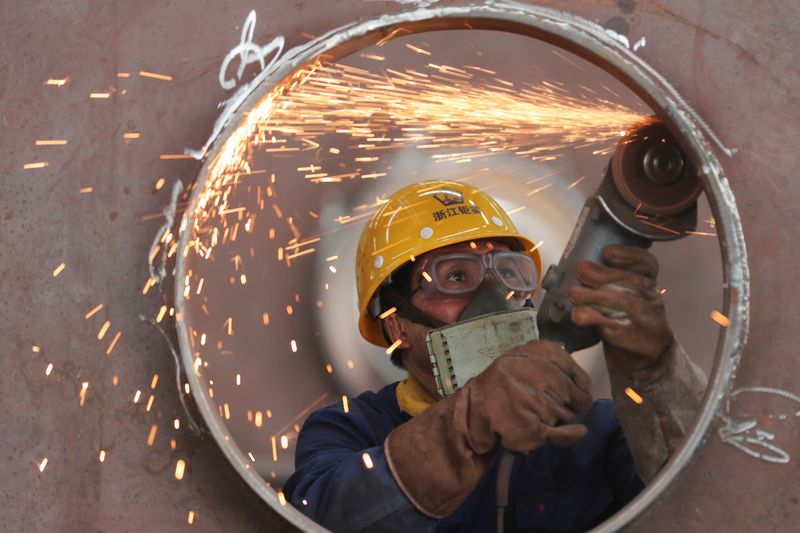By Gabriel Crossley
BEIJING (Reuters) - Chinese industrial activity has snapped back to pre-coronavirus growth levels, with factory surveys hitting multi-year highs in November, but the headline expansion masks struggles for smaller firms and looming pressures for exporters.
Readings from the official and Caixin's Purchasing Managers Indexes hit three- and 10-year highs respectively last month, a reflection of the industrial sector's strong overall recovery.
Official data also shows industrial profits for large firms grew at their fastest pace since 2017 in October.
Equipment, electronics and auto manufacturing have performed particularly well, helped by state subsidies targeting consumption of cars and white goods.
But behind the strong headline numbers, many smaller firms, which employ the majority of China's workforce and are traditionally its collective engine of industry, are still struggling, say official data and analysts.
"The recovery is uneven, because it's driven by investment and construction, and mainly for large firms," said Dan Wang, chief economist at Hang Seng Bank (China).
"Monetary policy has been tight since June, so small firms face a widespread liquidity shortage."
Following a string of supportive measures this year, China's central bank has shifted to a more steady stance as the economy rebounds.
After a string of high-profile bond defaults, the PBOC this week unexpectedly injected 200 billion yuan (23 billion pounds) through its one-year medium-term lending facility, in an apparent bid to soothe market nerves.
Official data shows the recovery of factory activity for smaller firms has lagged well behind that of larger ones since the coronavirus stalled industrial activity earlier in the year.
Small firms' factory activity only accelerated in two of the past six months, and at a much slower pace than that of larger ones.
"The recovery of the manufacturing industry is still uneven," said Zhao Qinghe, an official of the National Bureau of Statistics, in comments released along with November PMI data.
Certain sectors, such as textiles, have seen factory activity continue to decelerate every month this year, Zhao added.
EXPORT UNCERTAINTIES
Exporters also face uncertainties from the appreciation of the yuan currency and uncertain global demand, say analysts.
The currency started its appreciation trend in June and booked six straight months of gains, its longest such winning streak since late 2014. It has risen nearly 9% against the dollar since late May.
Some firms reported that a strong yuan squeezed profits and reduced export orders in November, said Zhao.
"Now the expectation is RMB will continue to hike and that can wipe out more small export firms," said Hang Seng's Wang, referring to the renminbi, another name for the yuan.
China has posted surprisingly strong headline export data for months, helped by strong foreign demand for medical supplies and electronics products and continuing virus-related disruptions of other countries' production.
Surging infections and fresh lockdowns in some key trading partners could dent demand for some Chinese exports. But bringing the virus under control overseas could also reduce its competitive advantage in producing other goods.

"China exports - and profits of export-oriented industrial firms - may face some headwinds if other major economies regain market share," said Bruce Pang, head of macro and strategy research at China Renaissance.